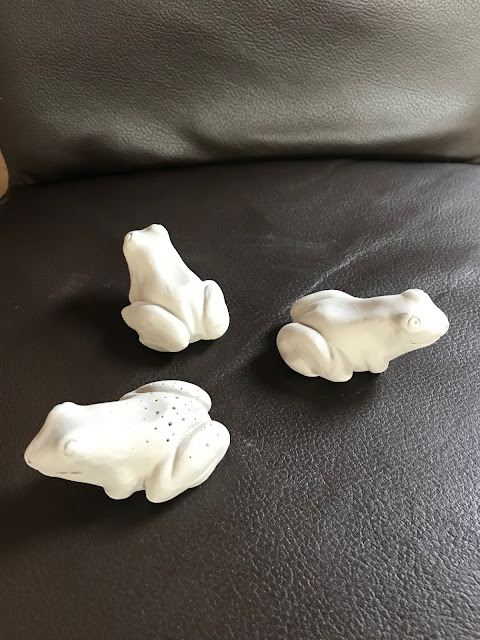June 25, July 4 & 14, 2018 - History of Industry
Over the past couple of weeks we've had the opportunity to get an interesting taste of early English industry. We toured a textile mill, a pottery factory, and a flour mill and are combining them all in this post.
Masson Mills
The following is a description of the history and significance of the textile industry in the area in which we have been living since we got to England:
The Derwent valley, upstream from Derby on the southern edge of the Pennines, contains a series of 18th and 19th century cotton mills and an industrial landscape of high historical and technological significance. It began with the construction of the Silk Mill in Derby in 1721 for the brothers John and Thomas Lombe, which housed machinery for throwing silk, based on an Italian design. The scale, output, and numbers of workers employed were without precedent. However, it was not until Richard Arkwright constructed a water-powered spinning mill at Cromford in 1771, and a second, larger mill in 1776-77 that the "Arkwright System" was truly established. The workers' housing associated with this and the other mills are intact and span 24km of the Derwent valley from the edge of Matlock Bath in the north nearly to the centre of Derby in the south. The four principal industrial settlements of Cromford, Belper, Milford, and Darley Abbey are articulated by the river Derwent, the waters of which provided the power to drive the cotton mills. Much of the landscape setting of the mills and the industrial communities, which was much admired in the 18th and early 19th centuries, has survived.
The textile industry here led to the explosion of the industry in America's New England as well (We toured very similar textile mills in Lowell, MA last year.). Masson Mills, just down the road from Cromford, were producing cotton textiles until 1991! They continue to give demonstrations of this operable factory. It's impressive to see how they used river flow to power so much. It is also interesting and sad to learn of the extremely difficult and dangerous working conditions of those employed in the factories, some who were as young as 6 years old back in the day!
The following map shows the mills, canals, etc. that were scattered along the Derwent River Valley. We lived in Cromford (at the top of the map) for nine days, and we currently live in Duffield. Both of these towns and the surrounding areas were built up around the textile industry.

Ingeniously, all of the machines in this workroom were run by the river! They are all belt driven.
Canal diverted river water was run through the water wheel (or later, turbines). The water could be "shut off' and sent back to the river, using the diversion gate pictured below.
We weren't sure what this giant steel cauldron was for, but it would be big enough for a family stew pot 😅. It was an interesting tour. This would have been a bustling place a few hundred years ago, and the very heart of new industry in England.
Denby Pottery
Near where we currently live in Duffield, there is a pottery factory where they have been mass producing pottery since 1809. They would not allow us to take pictures during the actual tour, but here are a few taken in the areas where photography was permitted.
They allowed everyone on the tour an opportunity to paint their own dish. There was the option to just experiment with painting a dish and then wash it all off, or you could have it fired and purchase the item. We chose the former option, as it was a lot harder than it looks to make it look nice!
At the end of the tour they let us mold a clay frog to take home. They turned out really cute! The picture below shows ours after a few days of drying. They won't get fired, but we can still paint them up and keep them.
Stainsby Mill
We toured a small flour mill in conjunction with our tour of the Hardwick Hall manor house (We'll post more on that soon.). The mill was built between 1846 and 1850, and the National Trust has restored it to operating, flour producing condition. This mill was built to provide the whitest flour possible (a status symbol of the time) for the wealthy man who owned Hardwick Hall.
At every National Trust site we have visited, the volunteers have been exceptional! They are loaded with interesting historical information and clearly really care about the places where they work. We have been extremely impressed with them.
The picture above shows a turning water wheel through the grated window.
The stone at our feet above is a local grit stone that was used to grind animal feed. Behind us is the finer and harder stone (imported from France) that grinds the nice flour for human consumption. The grit stone wheels last about 15 years, while the original French stones are still being used today!
The water wheel is in the alcove behind Heather in the picture below. The waterwheel is driven by water draining from a pond that fills tanks on the outside of the wheel instead of it being turned by river flow.
Below, Heather and Hannah are using a miniature grinding stone to see how the milling process actually works. When the flour was being ground for the wealthy landowner, he demanded the finest flour, which was even finer than what we have available today. It was put through 3 different sieve grades, and then further refined by carefully combing it with a feather, by hand! Having such fine flour was a show of wealth and status.
We really enjoyed seeing all of these different forms of early English industry.





































Comments
Post a Comment